Comfort plays a crucial role in gravel races, at least according to the Berria Belador Allroad 8. The suspension in the rear is intended to provide traction and comfort. It’s also the most affordable gravel race bike on test. Do these two aspects hinder its performance?
This bike was reviewed as part of our 2023 gravel race bike shootout. You’ll find a comprehensive group test and test field overview here: Which is the best gravel race bike of 2023? 9 gravel race bikes in review
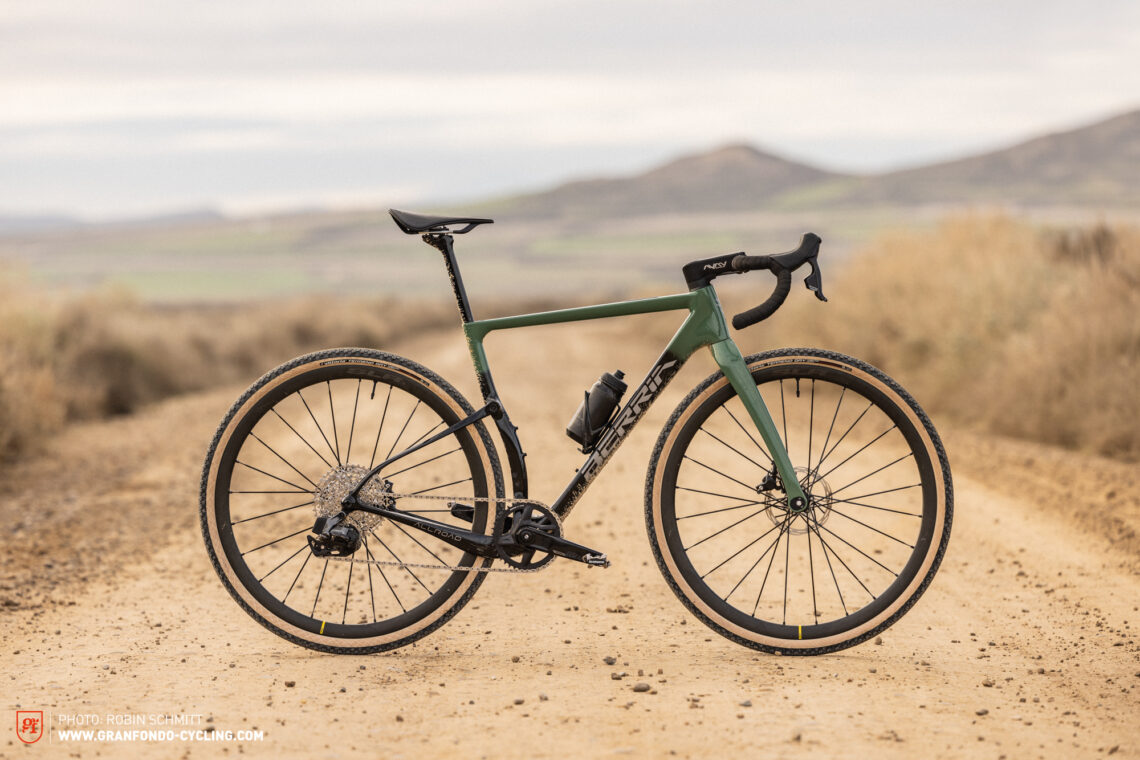
Chances are you haven’t heard of the Spanish bicycle brand Berria, though it’s not for lack of trying. The brand is out to supply all performance-oriented MTB, road, and gravel riders with appropriate bikes. Currently, the Berria Belador Allroad is their only gravel bike, despite being called Allroad. There are various builds available, and they can be bought from selected dealers. The Berria Belador Allroad is based on the same frame as the brand’s endurance road bikes. It uses the same suspension design as the Cannondale Topstone, which works like a leaf spring. We were immediately struck by the price of the Berria Belador Allroad 8, priced at just € 3,999 for the build with aluminium wheels, though you can also get a model with a carbon wheelset. How well does the rear suspension work and can it keep up with gravel race bikes that cost more than three times as much?

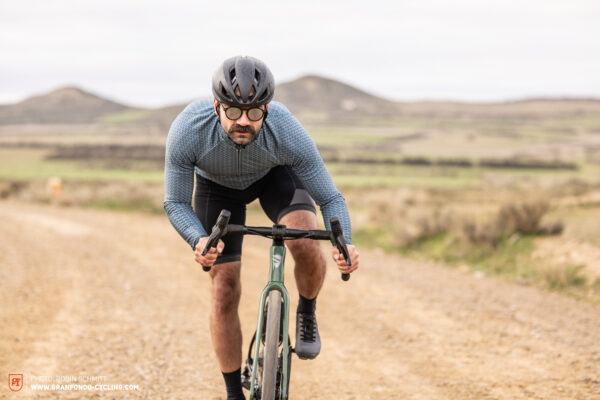
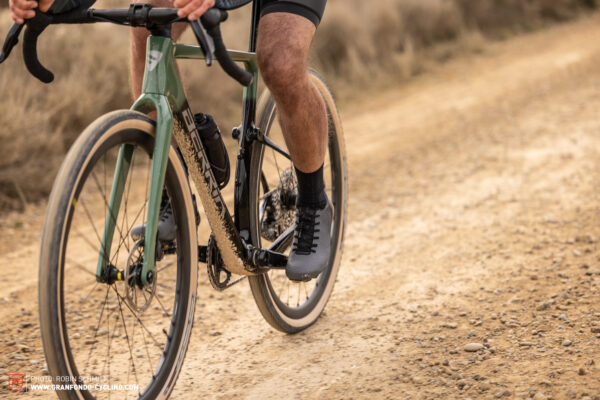
Two possibilities but just one function? What makes the Berria Belador Allroad 8 stand out?
Berria make quite bold claims about the Belador Allroad 8. It isn’t just any gravel bike but promises to be the ultimate gravel bike that combines the worlds of mountain and road bikes into one high-performance package. The damper is mounted at the point where the seat stays meet the seat tube. From there, it’s said to mitigate unpleasant impacts from the ground. Doing so should result in more grip and comfort. Thanks to the flip chip in the fork, you can also adjust the trail and thus adapt the handling. The two positions result either in incredible straight-line stability or more agile handling. Alternatively, you can get a model with a RockShox Rudy suspension fork.
Of course, the Berria Belador Allroad 8 also claims to be aero-optimised. The down and top tubes have been made more slippery from an aerodynamic perspective to reduce wind resistance. The fully integrated cockpit also promises to create less drag. The seat tube curves around the rear wheel, tucked into the frame. Along with improved aerodynamics, Berria claim this to be an “Anti Mud System”, which is a very euphemistic way of saying it’s got enough tire clearance. The Spaniards top their marketing drivel off with another big name, “Hydration System”, which simply consists of three bosses for the front bottle cage. All in all, the aero optimisations and other standout features are limited.
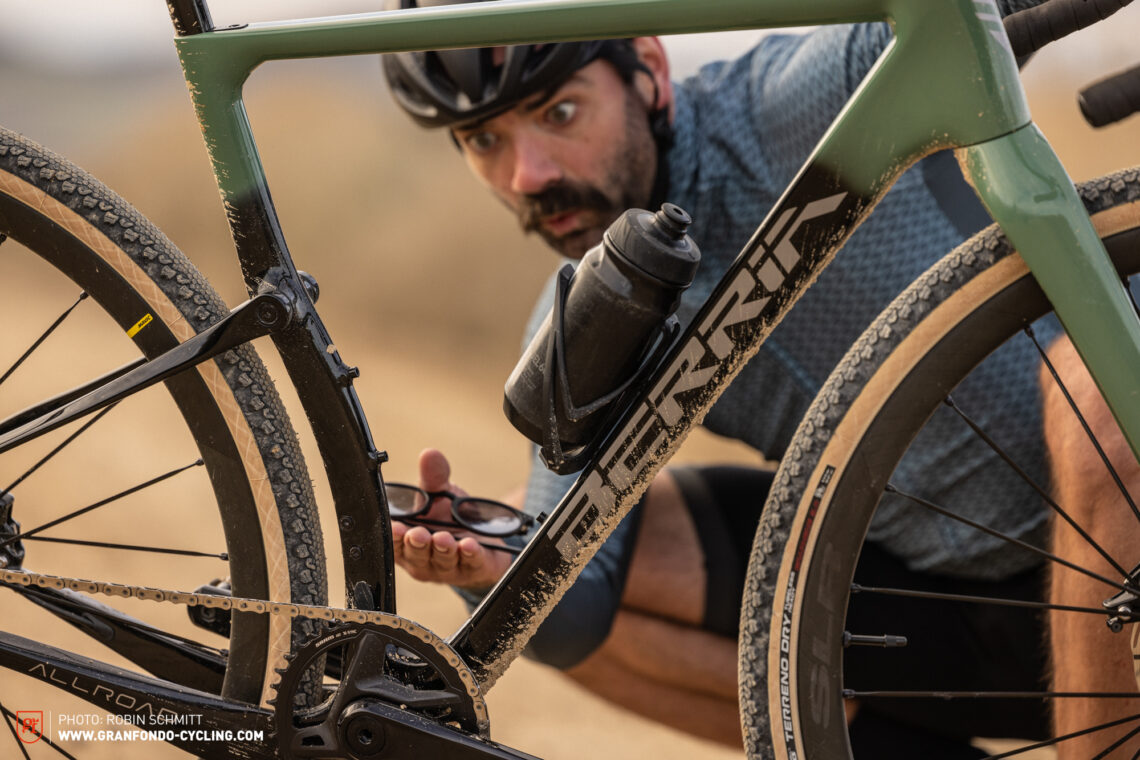
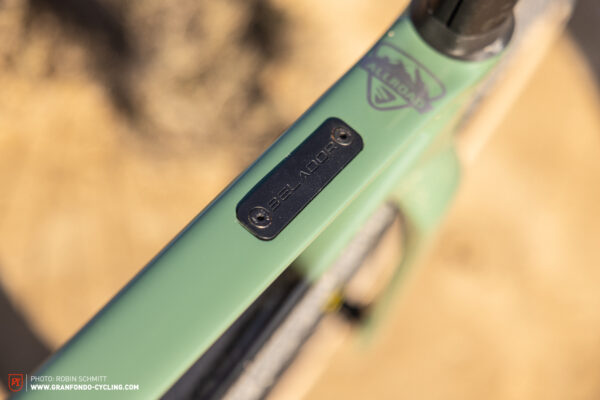
The covers for the top tube bosses are a beautiful touch.
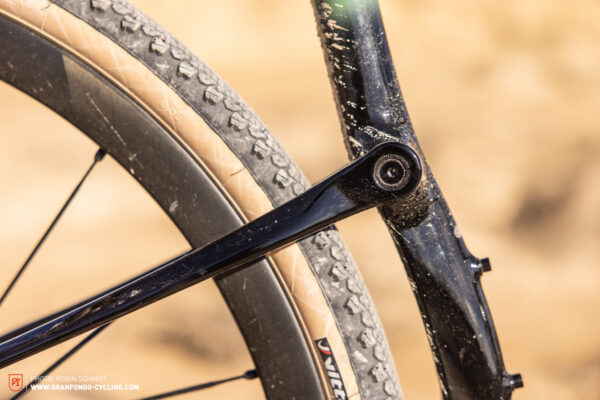
Surprising! The rear suspension performs excellently, generating plenty of comfort on rough gravel slopes.
Berria Belador Allroad 8
€ 3,999
Specifications
Seatpost Avanforce Carbon
Brakes SRAM Rivale eTap AXS HRD 160 mm
Drivetrain SRAM Rivale eTap AXS 1x12
Stem Avanforce ICS2 110 mm
Handlebar Avanforce UD Carbon 480 mm
Wheelset Mavic SLR 32 Disc
Tires Vittoria Terreno Dry TR GR2.0 700 x 38c
Technical Data
Size XS S M L XL
Weight 8,68 kg
Specific Features
suspension at the rear
Flip-Chip at the front
Mavic carbon wheelset
mounting points on the top tube
According to Berria, they didn’t give priority to design over function with the Belador Allroad 8. However, we find the overall design seems quite coherent. That said, you won’t find much attention to detail on the Berria Belador Allroad 8, the only example we can think of being the covered bosses on the top tube. Generally, going by looks, it isn’t obvious that the Berria is the most affordable bike on test. It’s the components that eventually let on. It’s the only bike on test featuring the SRAM Rival eTap AXS drivetrain. Moreover, the basic 8.1 model for € 3,999 comes equipped with the 1,959 g Fulcrum Rapid Red wheels. Our test bike, however, was fitted with the more expensive and lighter Mavic Cosmic SLR 32 wheels, which don’t feature on the stock models. We hope a similar swap is true for the thru-axles since they have a flawed design that allows them to come loose.
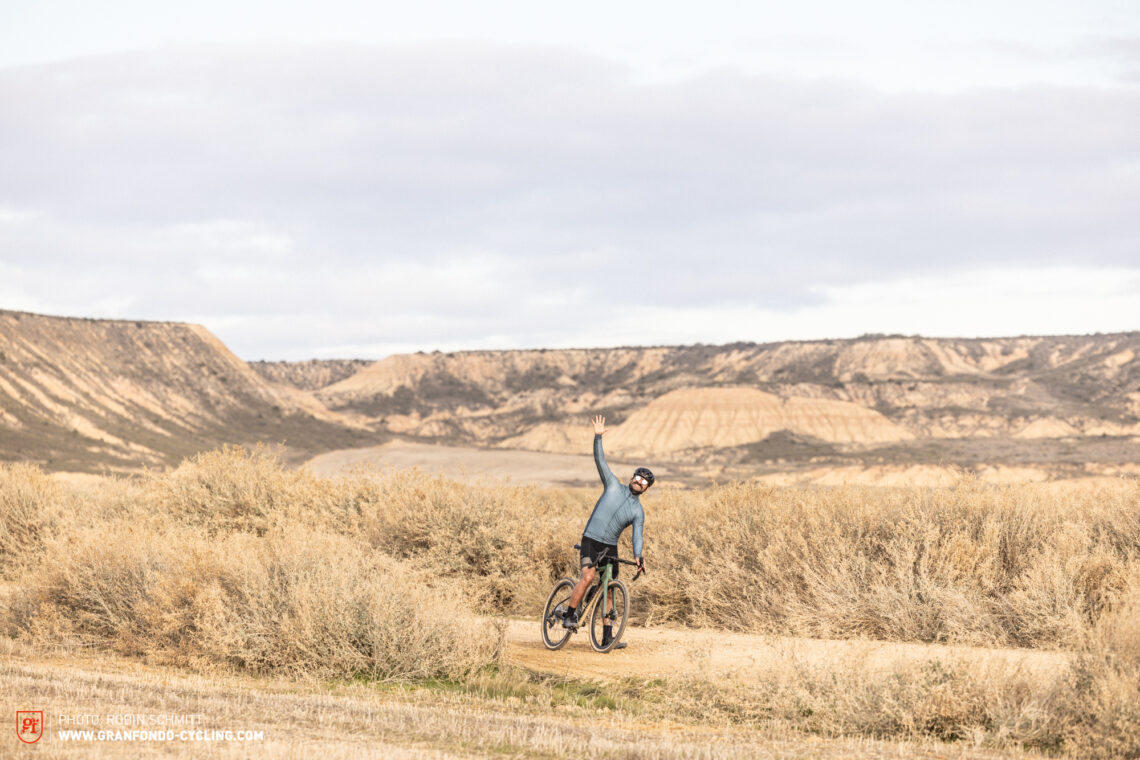
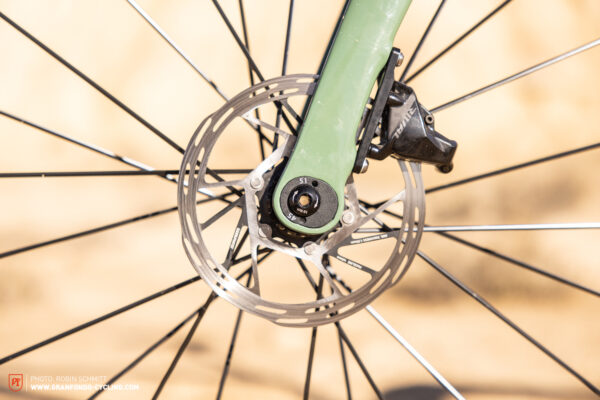
On the Berria Belador Allroad 8, a few millimetres determine whether it’s rideable or not. The flip chip only makes sense in one position, which renders it pointless.
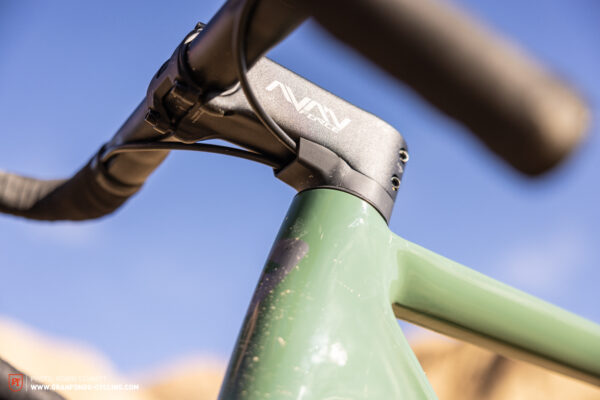
Cable routing port or spacer? With the Berria Belador Allroad 8, everything converges under the handlebar, including the function of certain components and the cables.
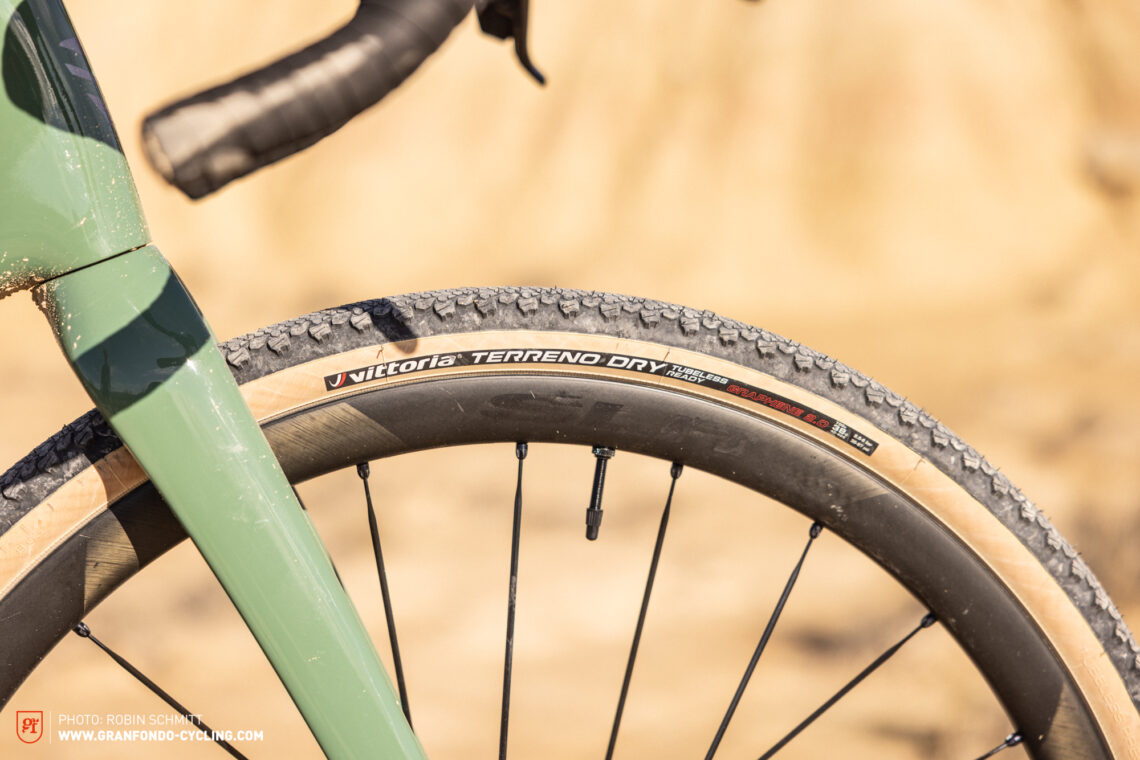
N/A! The Mavic Cosmic SLR 32 wheels and Vittoria Terreno Dry combination isn’t available on the stock builds. It’s a shame, since it’s a good combination.
Flip chip and damper – How does the Berria Belador Allroad 8 ride?
Before we could convince ourselves of the comfort of the Berria Belador Allroad 8, we encountered an issue with the seat post as we couldn’t lower it far enough due to the bend in the seat tube. Depending on how high you want the saddle, you will first have to shorten the seat post. With that done, we could race the gravel bike through the desert, and could hardly feel any bumps from the occasionally rocky ground. Evidently, the damper does a great job of mitigating slight impacts. However, the effectiveness of the suspension varies from rider to rider. The rider’s weight is a decisive factor in the mechanics of the claimed 26 mm travel. Unfortunately, the Berria Belador Allroad 8 starts to bounce when you get up out of the saddle to sprint, resulting in a loss of traction.
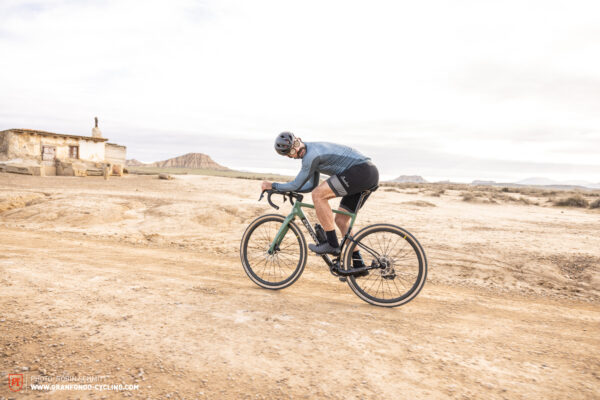
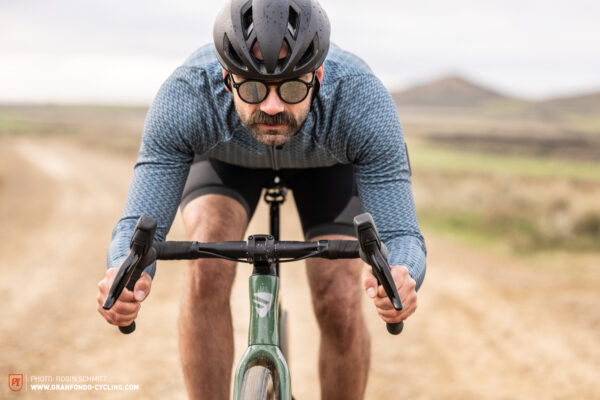
Unrideable with the flip chip in the rear position
The position of the flip chip also has a big influence on the bike’s handling. In the rear position, which is intended to ensure better straight-line stability, the Berria Belador Allroad 8 rides as if on rails. Even barely perceptible changes in direction require maximum input to get the bike to follow suit. In this setup, the gravel bike isn’t suitable for winding routes and trails. It feels better when the flip chip is in the front position, which is where we put it. It’s hard to believe that this is one and the same bike! Simply flipping the flip chip to the front position results in much more agile and relaxed handling. In this sense, the flip chip is superfluous. Nevertheless, the Belador isn’t nearly as playful as the Specialized S-Works Crux. The very aggressive riding position wasn’t fun for any of our test riders either. When selecting the stem length, we would recommend rather going shorter than longer. There’s just one thing to do about the poor handlebar ergonomics, both in the drops and in the hoods, which is to replace the handlebar.
The SRAM Rival eTap AXS drivetrain doesn’t perform poorly as an entry-level wireless option. However, there’s a clearly noticeable difference in performance compared to higher-end drivetrains, especially when it comes to shifting precision and speed.
Berria Belador Allroad 8
| Size | XS | S | M | L | XL |
|---|---|---|---|---|---|
| Seat tube | 460 mm | 484 mm | 508 mm | 532 mm | 556 mm |
| Top tube | 525 mm | 540 mm | 555 mm | 575 mm | 595 mm |
| Head tube | 98 mm | 113 mm | 129 mm | 146 mm | 164 mm |
| Head angle | 70° | 70.5° | 71° | 71.5° | 72° |
| Seat angle | 75.1° | 74.8° | 74.5° | 74.2° | 73.9° |
| Chainstay | 419 mm | 419 mm | 419 mm | 419 mm | 419 mm |
| BB Drop | 75 mm | 75 mm | 75 mm | 75 mm | 75 mm |
| Reach | 374 mm | 388 mm | 398 mm | 407 mm | 418 mm |
| Stack | 535 mm | 550 mm | 567 mm | 587 mm | 605 mm |
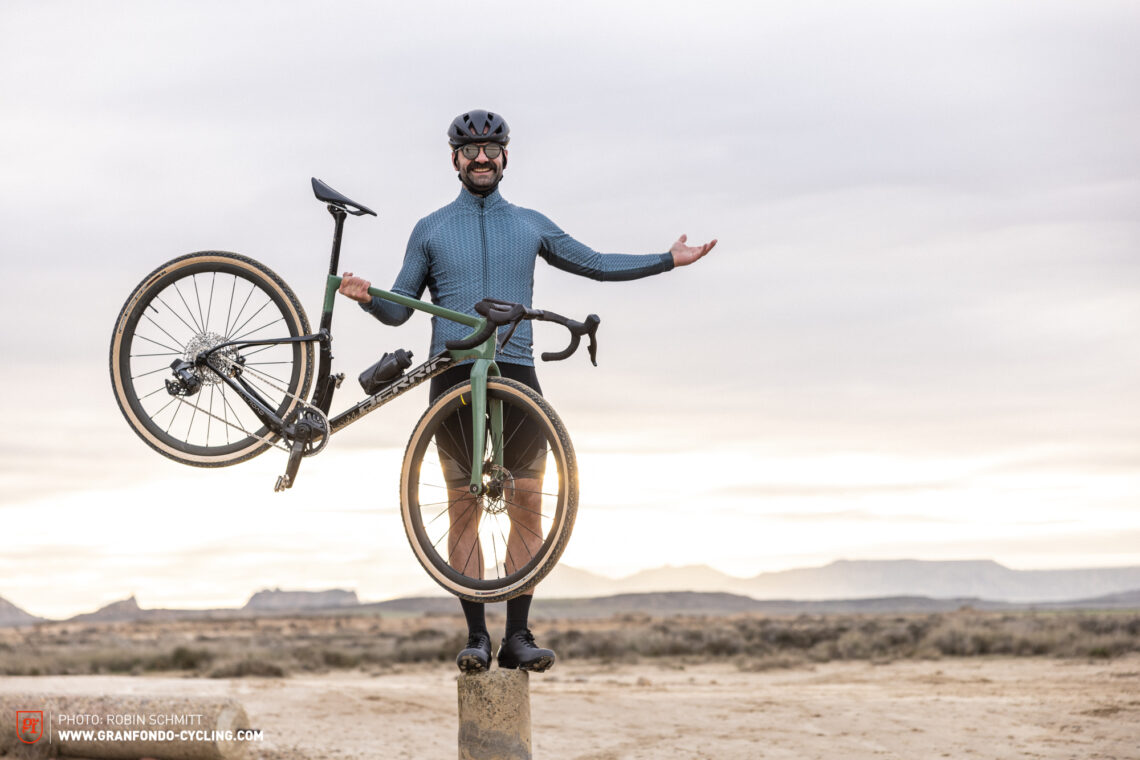
Who is the Berria Belador Allroad 8 for?
It isn’t easy to assign the Berria Belador Allroad 8 to a specific use case. With prices starting at € 3,999, it offers a fundamentally solid build. The damper speaks for off-road use, but the cumbersome handling clearly opposes this. However, with a few adjustments to the stem length, handlebar, and seat post, it can be turned into a suitable bike for long, hard gravel rides.
Tuning tips: shorter stem | different handlebar | different front thru-axle | dropper post
Riding Characteristics
4Agility
- cumbersome
- playful
Stability
- nervous
- confident
Handling
- demanding
- balanced
Fun factor
- boring
- lively
Comfort
- firm
- comfortable
Value for money
- terrible
- very good
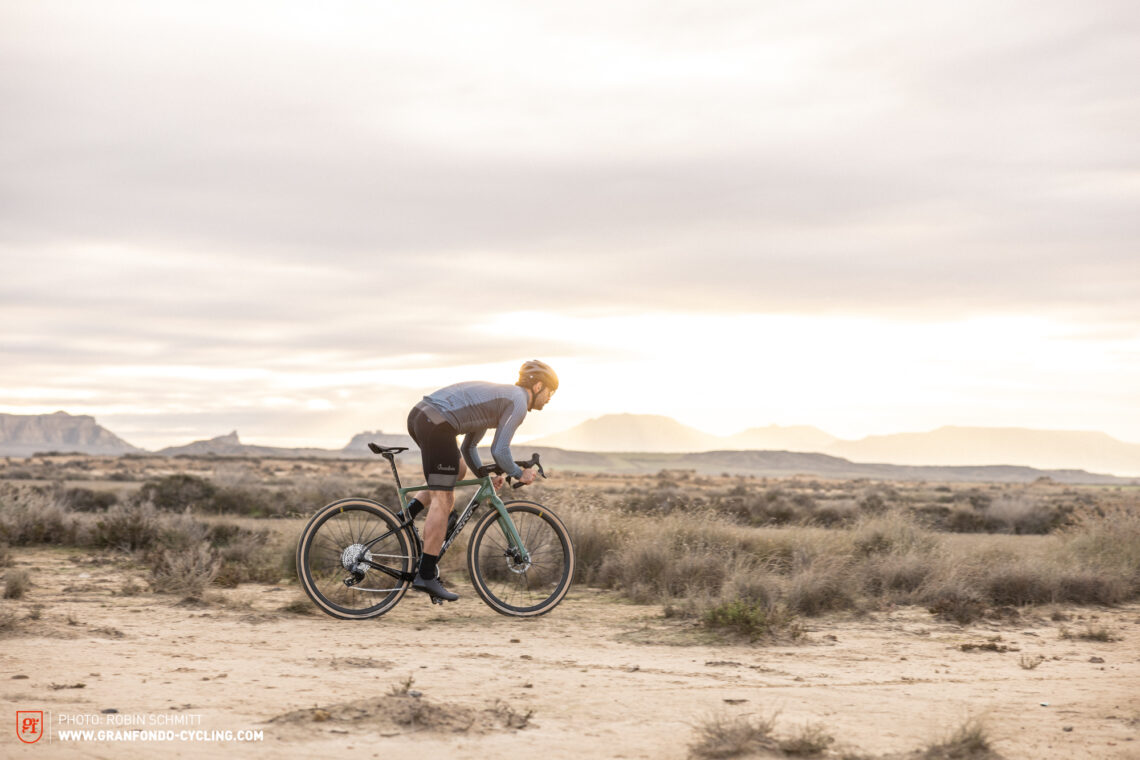
Conclusion on the Berria Belador Allroad 8
In theory, the Berria Belador Allroad 8 makes use of viable concepts, but theory and practice don’t agree in this case, which makes the gravel bike seem a little half-baked. The suspension works well, and the position of the flip chip certainly makes a big difference, but they don’t work together, and certainly not in combination with the bike’s aggressive riding position. We were also put off by the brand’s questionable marketing claims. What a pity.
Tops
- rear suspension mitigates rough impacts
Flops
- unbalanced handlebar ergonomics (the reach is too long; the drops aren’t horizontal)
- stem is too long
- flip chip is unnecessary since the rear position makes the bike unrideable
- thru-axles can come loose
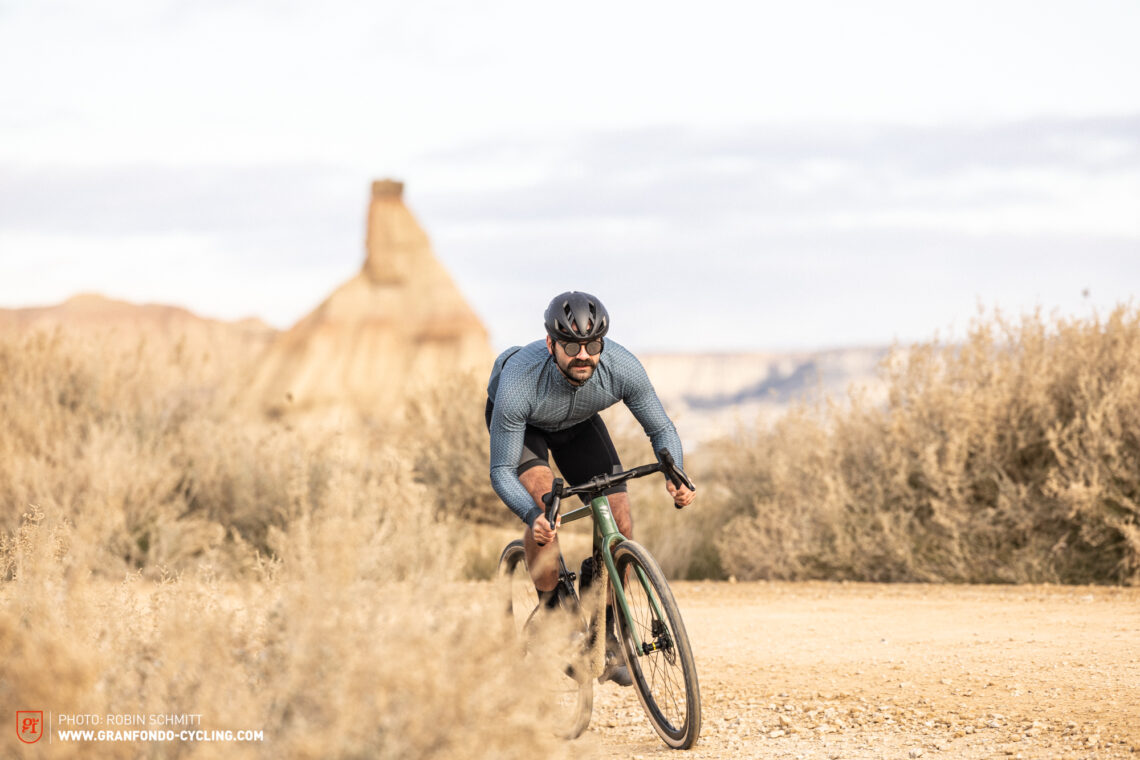
You can find out more about at berria.com
The testfield
For an overview of the test fleet head to the group test: Which is the best gravel race bike of 2023? 9 gravel race bikes in review
All bikes in test: Argon 18 Dark Matter | Berria Belador Allroad 8 | BMC Kaius 01 ONE | Canyon Grail CF SLX 9 eTap | Factor OSTRO Gravel | Fara Cycling F/All-Road | Ridley Kanzo Fast | Specialized S-Works Crux | Trek Checkpoint SLR 9 eTap
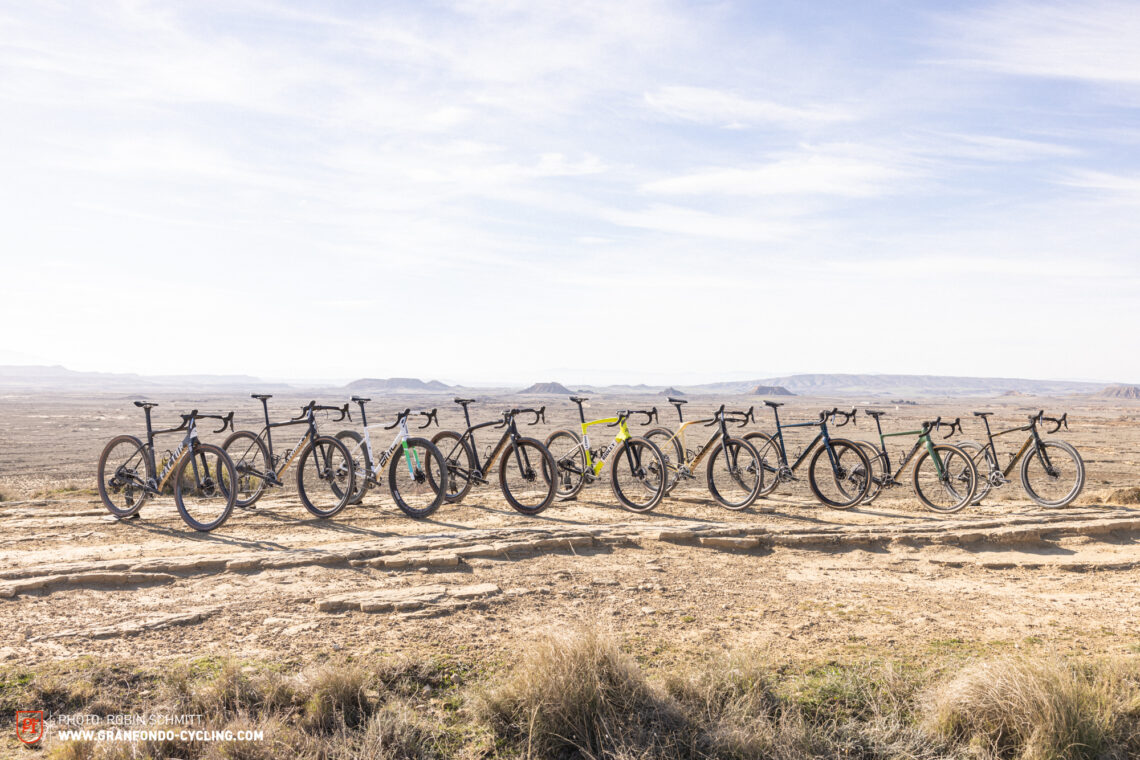
No, it’s not about perfect race tracks, it’s about efficiency. Fast, fleet-footed and efficient – those who want to speed along high-speed passages need a defined and spritely bike that accelerates with ease and efficiency. Nevertheless, reliable components are important too. We interpret “Smooth tarmac” bikes as follows: Hard efforts at high speeds with a maximum efficient bike on a consistently well-paved road. Effort-joy ratio: 80:30 (not everything has to be 100%!)↩
… also known as bike riding. Broken-up roads in the hinterland, deadlocked gravel roads, loose surfaces – sometimes muddy, sometimes bone-dry. For this, it takes bikes with super all-round, handling and wearing qualities uphill and downhill. Effort-joy ratio: 50:50↩
If you want to use your bike almost every day, you usually do not need an extremely tuned racing machine. Solid components, which are able to cope with the rigours of continuous usage in any kind of weather, are part of the basic equipment. At the same time, the bike should have practicable details: integrated fenders/assembly options, luggage racks/attachment points and a light system or at least the option of installing bike lights. The position on the bike should be rather relaxed, the overall comfort high, so that the Afterwork Ride becomes a cure and not a curse. Effort-joy ratio: 30:70↩
You can find more info about our rating system in this article: Click here! ↩
Did you enjoy this article? If so, we would be stoked if you decide to support us with a monthly contribution. By becoming a supporter of GRAN FONDO, you will help secure a sustainable future for high-quality cycling journalism. Click here to learn more.
Words: Martin Staffa Photos: Robin Schmitt, Jan Richter







